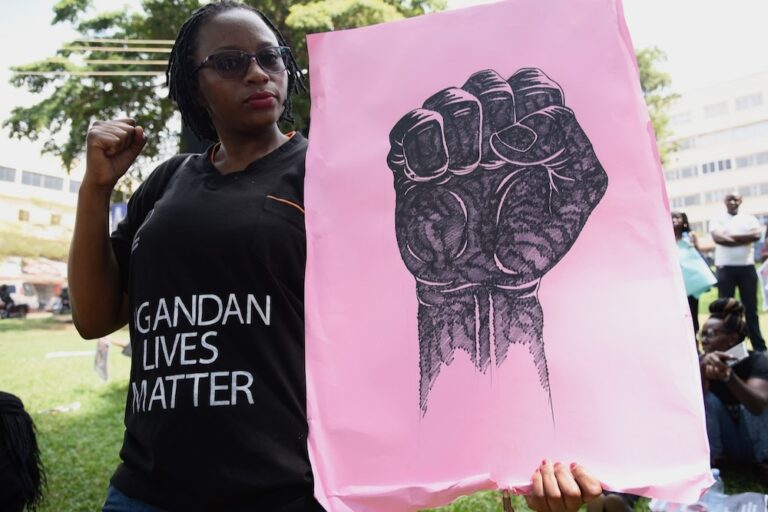(CPJ/IFEX) – At approximately 9:00 a.m. on 13 May 1999, Criminal Investigation Department (CID) police officers detained three journalists for the independent daily “The Monitor” – editor in chief Wafula Oguttu, editor Charles Onyango-Obbo, and news editor David Ouma Balikow – at the newspaper’s Kampala offices, and transported them to CID headquarters, also located in […]
(CPJ/IFEX) – At approximately 9:00 a.m. on 13 May 1999, Criminal
Investigation Department (CID) police officers detained three journalists
for the independent daily “The Monitor” – editor in chief Wafula Oguttu,
editor Charles Onyango-Obbo, and news editor David Ouma Balikow – at the
newspaper’s Kampala offices, and transported them to CID headquarters, also
located in the capital city. At approximately 3:00 p.m., the three
journalists were taken to the Buganda Road Magistrate Court in Kampala,
where they were each charged with sedition and with the publication of false
news under the Penal Code Act. Oguttu, Onyango-Obbo, and Balikow were each
released on bail of US$100, and surity of US$1000. A hearing has been set
for 15 June.
The press secretary to the president, Hope Kivengere, and the senior
presidential advisor for the press and public relations, John Naggenda,
reportedly lodged the complaints against the three journalists in response
to “The Monitor”‘s 11 May publication of a photograph depicting soldiers
holding down a nude woman while one soldier held a pair of scissors near her
genital area. The caption to the photograph said that the attack took place
at army barracks in Gulu, in northern Uganda.
Deputy Army Commander Brigadier Joram Mugume has said that the “The Monitor”
photograph was faked. However, CID police, when presented with an original
copy of the photograph by “The Monitor”, did not dispute its veracity. CPJ
sources report that one soldier in the photograph has been identified, but
fear that authorities will not move expeditiously to bring him to trial.
Background Information
Ogen Kevin Aliro, chief sub-editor of “The Monitor”, was severely beaten in
October 1998. The assault is believed to be reprisal for his report in “The
Monitor” on the use of torture by authorities in Uganda.
At approximately midnight on October 29, 1998, near his residence in Ntindi,
Kampala, Aliro stopped his car when another car pulled out from a side
street, blocking the road. When Aliro exited his vehicle to ask for
passage, he saw that another car had blocked his vehicle from behind. Two
men from each car rushed out from the vehicles and knocked Aliro to the
ground. As Aliro fell, he noticed two more men coming toward him from nearby
storefronts. The men pinned Aliro’s face to the ground as they punched and
kicked his head and back.
One of the assailants called the journalist by his first name, and another
shouted, “This will teach you to keep your big mouth shut!” As Aliro
attempted to call for assistance on his cellular phone, one of the attackers
said, “You are looking for your cell phone to call your friend Kazini for
assistance?” James Kazini, the chief of staff of the Ugandan Army, and Aliro
are acquaintances.
Aliro sustained a compound fracture of his collar bone, a fractured shoulder
blade, and injuries to his face, arms, and legs in the assault. He required
surgery, which was not performed until 12 November.
The attack is believed to be retaliation for Aliro’s investigative report
titled “Safe Houses: A Return to the Shadows?”, published in the 27 October
edition of “The Monitor”. The article reported that the practice of torture
is re-emerging in Uganda at secretly located “safe houses” run by the
Internal Security Organization (ISO) and the Department of Military
Intelligence (DMI) (see IFEX alert of 17 November 1998).


